#also the vampire in lycaon's story
Explore tagged Tumblr posts
Text
the higher-ups at Hoyoverse said 'cut the men' and the ZZZ devs heard 'cunty men' AND DELIVERED
#jokes aside tho god i love lighter#IM SO HAPPY FINALLY FOR A GUY S RANK#hes such a cunty bitch/pos#I LOVE THAT MAN <3#TBH MOST THE ZZZ DUDES ARE DOPE AS SHIT#ZZZ#i love when men#SRSLY CANT GET OVER HIM IN THE TRAILER#also the vampire in lycaon's story#GIMME HOYO#zenless zone zero#ALSO EMPHASIZING THIS IS A JOKE PLZ DONT TAKE IT TOO SERIOUS
37 notes
·
View notes
Text
.
#so like not to sound crazy or anything but victoria housekeeping co is so silly#little shy girlie with a CHAINSAW..#low energy shark girlie thats actually really good at fighting..#girlie who is a very good maid but cant cook!! and gives spooky vibes :o!#and THEN THE WOLF GUY. who was literally known as hyv's furry thirst trap long before the game even released 😭#anyw there are other things to be said abt ellen idk i picked whatever came to mind first but i actually.adore ellen sm<3#aND IM SO UPSET I HAVE EVERYONE EXCEPT LYCAON. STILL. like at this point imma have to drop 300 in standard for that man#like I HAVE RINA. AND ELLEN. AND BOTH OF THEIR W ENGINES. ELLENS IS X2. LIKE GIRLLLL COE ONNN#also finding out funny things abt them is wild. like rina drives carriages. sometimes ppl request that service from vh. girl huh#i thought ellen was so cute when we had to give her candy for her energy lvls 😭#also corin not understanding why ppl are afraid of chainsaws.. really shy but wanting to do well.. shes great i love her#and then the wolf man with a mysterious past. his nemesis is a fucking vampire. like actually. bro 💀#anyway i wonder if we'll ever get to flesh out those character stories either in main later or in new additions to the prev stories :o#44597#omg random tmi but vhc also has 2 of the fastest charas (up to ellens release) ellen and lycaonn
0 notes
Text
Some fun stuff from the Lycaon sub quest ♡♡♡
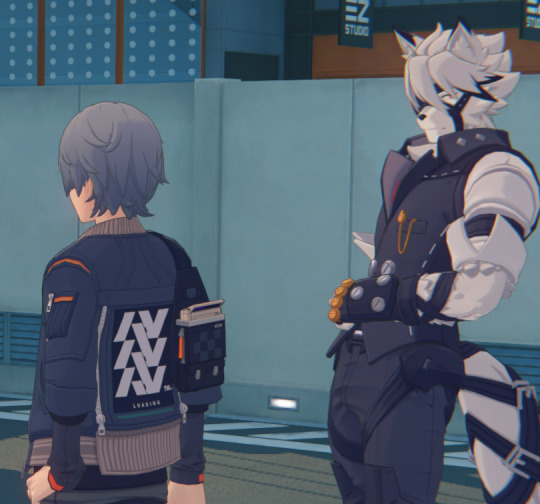
His stance is really quite cute~
He kinda gazes pretty hard at Wise due to it~

Honestly? Girl same. She was so thirsty, and I caught her right as she's full on dogging down the puppy tiddy... which also same i am not looking respectfully
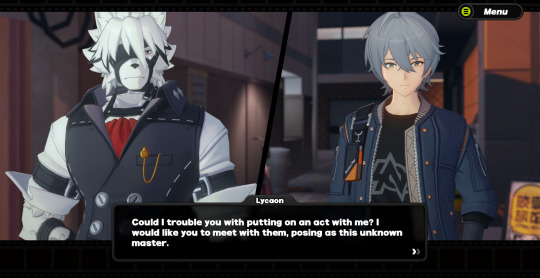
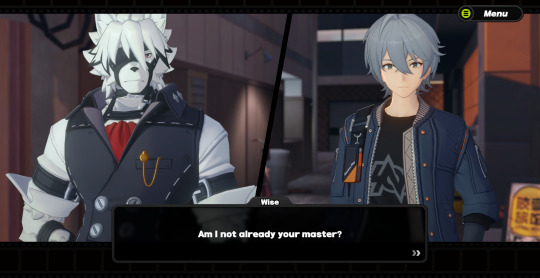
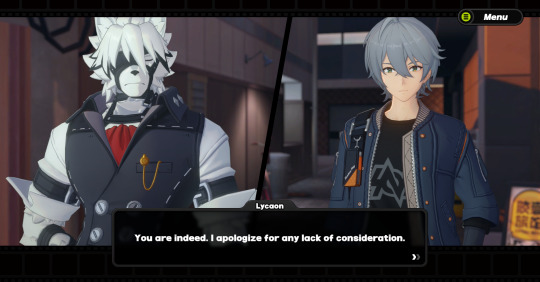
Wise you little shit, hes genuinely pouting!!! Keep doing it tho :3 bark bark amirite Lycaon??? (Im only a little sorry)

...huh???

......HUH??? Last but not least, spoilers from the finale!!!
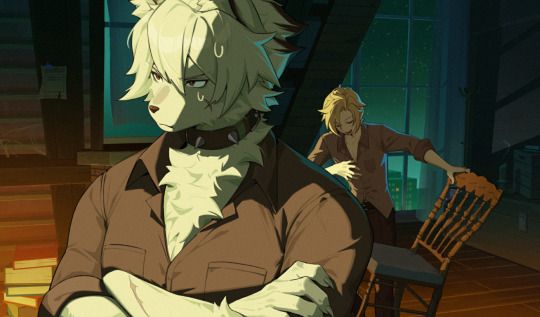
Baby Lycaon!!! Hes got a little scar on his cheek under the muzzle!!! Waaaah!!! Also its nice to see the trend of wearing clothing you literally are bursting the fuck out of goes way back, keep it up sweetie you look amazing
...
Wait who is that
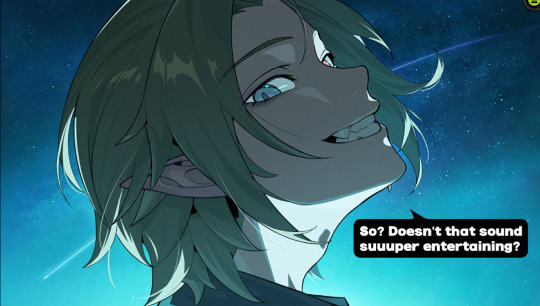
A FUCKING VAMPIRE HELLO???? SIR???? YOUR TEEFS??? YOUR EARS???
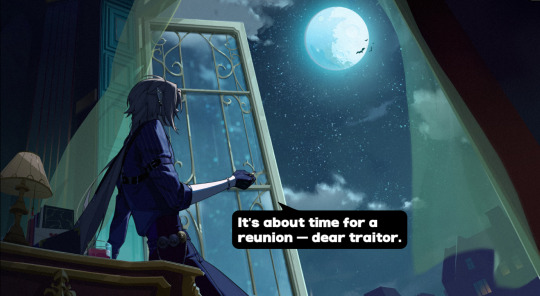
OH MY GODDDD?!?!?
I am rattling the bars of my encLOSURE WEREWOLF AND VAMPIRE PLOT HELPPPP IM WEAAAAAK
But he lost his chance, hes got a little robot bunny hubby now (or wifey!!! You go belle stans ♡♡♡)
Hoyo you son of a bitch im IN
I'm gonna go do Rina's side story but I am ENTHRALLED
#zzz#zzz lycaon#von lycaon#lycaon#zenless zone zero#zzzero#wise#zzz wise#zenless zone zero wise#zzz spoilers#zenless zone zero spoilers#he makes me feral
213 notes
·
View notes
Text
Von Lycaon, Hugo Vlad and Bangboo Butler
Ok so I finished the bangboos vs ethereals events completed everything and yes we do see Nicole and Lycaon dropping their respective bangboos Amillion and Butler to take the exams, and at the end of the very last exam when there's nothing else left, guess what interesting conversation I get with the coach?
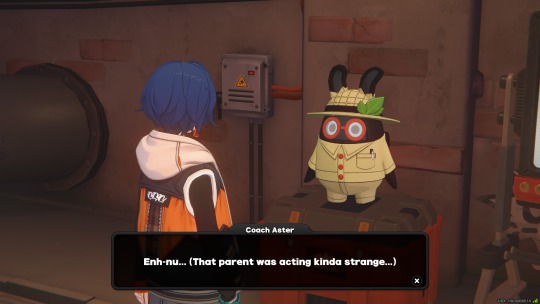

You mean that hot vampire guy who was Lycaon's best friend *cough*boyfriend in my head*cough* and is now his enemy, that guy? His name is really Hugo then it's now confirmed in game, yes!

OMG DOES THAT MEANS HE'S COMING SOON CAN WE PLAY HIM I HAVE WANTED HIM SINCE SEEING HIM FOR THE FIRST TIME IN LYCAON'S AGENT STORY I AM SO INTERESTED IN HIM I SWEAR HE, HARUMASA AND BILLY ARE MY HOLY TRINITY!!!!
Guess we might not have to wait too long before he appears and hopefully we can play him later on~ He's so handsome, Hoyo knows my type very well~
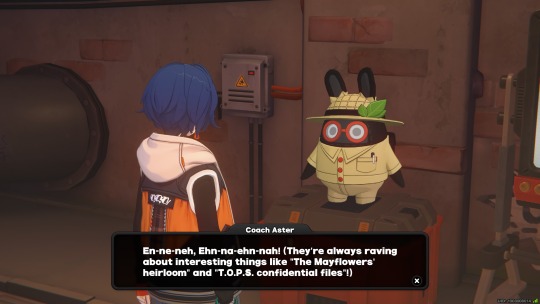
The Mayflowers' heirloom? T.O.P.S confidential files? Seems like Hugo is busy.
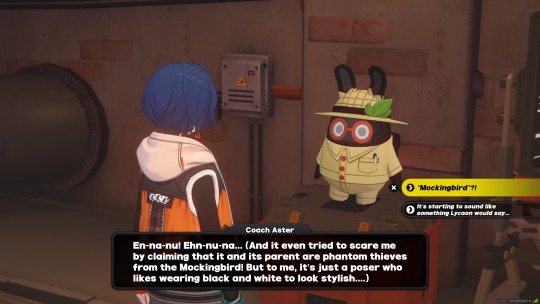
You're talking about Butler Bangboo right? Wait does that mean Butler used to belong to both Hugo and Lycaon and when they parted ways Lycaon took Butler with him? And it says Hugo is it's parent? It almost sounds like child's custody over a bad divorce to me when put like that in context. XD Hugo and Lycaon are the Butler bangboo's parents now omg!! It sounds proud of itself and it's parent for being phantom thieves, guess Butler is still a criminal at heart unlike Lycaon, I wonder if it will try to meditate between the 2 if they meet up again.
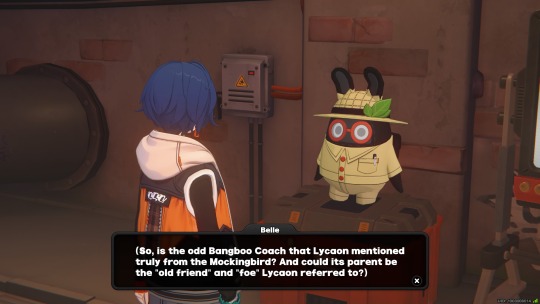
Hugo being a bangboo coach and boy does his list of jobs keeps getting longer, bangboo coach, phantom thief, Mockingbird, Butler's parent, old friend of Lycaon, foe of Lycaon... my future third husband in this game after Billy and Harumasa I will have them as my harem.
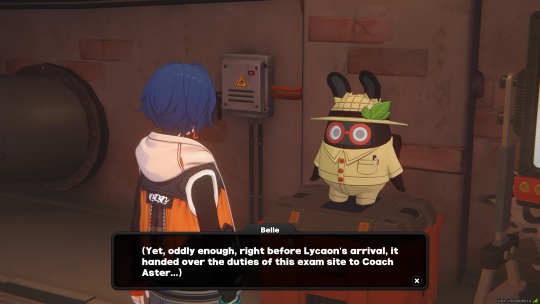
So it looks like Butler still doesn't mind that Hugo is a phantom thief and not around, and still seems to like him funnily enough, but probably keeps it a secret from Lycaon?
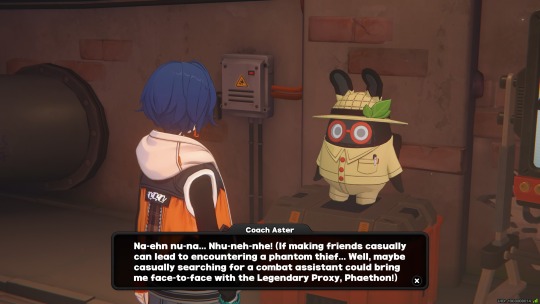
Already happened buddy.
Ok so yeah this event seems to hint that we'll see Hugo soon possibly, if we're lucky it might be in chapter 7 or before... Anyway it seems to tease Hugo's arrival, I doubt they just said his name here just to never mention him again, they did link lots of past bad guys to the main plot, like the hacker at the beginning, the sacrifice, Lucius, Null_Face, maybe Hugo will be connected too. I wouldn't be surprised if Harumasa is also connected, the drug in his agent story was probably to make sacrifices and he probably almost became one since Kirishima did say he was supposed to die but his master didn't have the heart to kill him so who knows.
I'm so excited, can't wait to see Hugo in the flesh~
#zenless zone zero#zzz#zzzero#hugo vlad#zzz hugo#hugo zzz#von lycaon#zzz lycaon#victoria housekeeping#zzz victoria housekeeping#bangboo#zzz bangboo#zzz butler#bangboo butler#butler bangboo#asaba harumasa#zzz harumasa#zzz billy#billy kid#zzz asaba harumasa
67 notes
·
View notes
Note
YIPEEE I LOVE DISCUSSING OCS !! i think people who think self-shippers/yumejoshis are cringe need a bit more whimsy in their life ☝️
my agent's name is scarlett reid and she's a bat thiren under victoria housekeeping ! i was debating whether or not i'd make her represent the vampire trope bc lycaon's story teased an upcoming vampire chara (altho idk if he's gonna be playable) but this is all i can think of for now so unless i can come up with something else, she's gonna be the vampire of the team 😭
basically her story is that she has a sickly younger sister who inspired her to pursue pediatrics, the only issue is her fangs become visible when she talks/smiles and it scares most kids 😭 she also has a crazy work history because she used to take up a bunch of jobs just to get by until she got the opportunity to join victoria housekeeping
i've also been considering making it so that she was a medic in the ember arena which is where she met lighter but i haven't decided on if she was born in the outer ring and moved to new eridu or born in new eridu and worked in the outer ring for a while for some reason
OOH SHE SOUNDS LIKE SHES SLAYING ?? like ugh i’d eat her up if she was in game !! her name is so pretty too and shes a bat thiren ?? sign me uppp
as part of lighter nation, i believe lighter would absolutely ADORE the little fangs. like the first time she smiles at him, he was a little scared but he finds it charming. whenever he’d attempt to flirt with her (and fail miserably), as long as her little fangs show, he KNOWS that she’s genuinely smiling and laughing.
also , since there’s a huge misconception that most bats like human blood, i think he’d be a little worried that she’d go crazy upon seeing him bleeding from his matches. BUT NO, she’s treating him so well, his eyes are focused on her while she’s busy patching him up. this is canon, i was there in the ember arena 🙂↕️
i hope we get more about the outer ring because i think it could definitely help you decide which origin is better for her. i LOVE your oc and i’m so happy that you’re telling me about it AKSHSKBS
#lumiresponds ˚✧₊⁎☆#lighter lorenz#lighter zzz#i hope this is also a sign to everyone that i will write for almost anyone at all#give me any description for reader and i will GET TO IT#also i just like imagining lighter being in love in different ways#*dreamy sigh* i love lighter……#i also love making yumeships real#I AM A SELFSHIP/YUMESHIP BELIEVER UNTIL I DIE#you x your fav chara or your oc x your fav chara is literally canon and anyone that says otherwise can leave my blog
14 notes
·
View notes
Text
Werewolf weaknesses
Two nights ago was the first night of the Full Wolf moon (First full moon of the year). It usually lasts a few days. And Friday is the release of Blum House's Wolf man (More of a remake of The Beast within than the actual Wolf Man story).
So to celebrate here are a list of the actual traditional werewolf weaknesses. Many people forget that werewolves, in folklore, and even in the old Universal monster movies were mostly immortal. Only certain things could actually kill them and they often didn't age.
Also in many lore the werewolf took the form of an actual wolf instead of a bipedal man-wolf. And they could change at will, not just on the full moon, though many were more animal-like and prone to losing control on the full moon.
The oldest known werewolf story is the Greek myth of King Lycaon of Arcadia. Lycaon served human flesh at a feast for Zeus. Zeus was so offended that he turned Lycaon into a wolf, only his eyes remained human. Over time Lycaon learned how to turn himself into a man again at will and back into a wolf at will but while a man his eyes were those of a wolf and while a wolf his eyes were those of a man so he was never truly of one world or the other. He formed his own cult when he learned how to spread what he was to other and this was the origin of lycanthropes (Werewolves) in Greek legend.
A short version of the story can be found in The Werewolf Handback by Dr. Robert Curran (Also called Bob Curran).
Now on to the werewolf weaknesses.
One final thing before I proceed. Many of these weaknesses overlap with vampires. This is because in the nineteenth century there was a common belief that if a werewolf was killed he'd come back as a vampire so there were overlapping weaknesses.
And no, I'm not listing chocolate or most things toxic to real dogs. Now, I'm very tired so please excuse the typos.
Werewolf weaknesses:
1. Silver. Curt Siodmak popularized this weakness in the 1941 movie The Wolf Man Though the weakness was popularized with this movie there are actually some eighteenth century werewolf stories that already had werewolves vulnerable to weapons made of silver. In many works of literature and popular culture silver will also work against a vampire.
2. Cold iron was a common weakness against supernatural threats such as Sidhe (Faeries) and so was also a weakness of werewolves in many traditional folklore. Neil Gaiman used this weakness briefly in The Sandman issue The Hunt. Toward the end of Anne Rice's Vampire Chronicles she had it that iron restraints or prisons could supress her vampires' psychic powers.
3. Certain woods / plants. This list includes Yew, Hawthorne, Mistletoe, holly, roses, rose wood, and Wolfsbane (which I'll address separately).
4. Wolfsbane is the most common herb against werewolves. In J. K. Rowling's Harry Potter books a Wolfsbane potion could control a werewolf's more feral side on the full moon. This is one of Rowling's weirdest bits of law since Wolfsbane is a real plant and highly toxic to all mammalian life. It's a deadly neurotoxin with no antidote. Don't feed ANYONE Wolfsbane, werewolf or otherwise. It's a pretty flower also know as Acconite or Monkshood. In Frankenstein meets The Wolfman, Lawrence Talbot, The Wolf Man (who had previously been killed by being beaten with a silver handled cane with a pentacle carved into it) was able to be revived from the dead by removing the wolfsbane that had covered his grave. 5. Fire. Burning a werewolf to ash will usually kill him. In the Auvergne of France there were cases of people actually tried and convicted of werewolfism (deliberately taking wolf form and killing livestock or people) and they were burnt at the stake. This will also work against a vampire.
6. Decapitation will kill a werewolf in many folktales. This may also work against a vampire.
__________________
7. The Pentacle. A five pointed star or a five pointed star within a circle works as effectively on a werewolf as a crucifix does on vampires in the novel Dracula. The pentacle was used against werewolves in The Wolf Man 1941 movie, Dark Shadows (TV series) and An American werewolf in London movie.
The Pentacle has many uses against a werewolf.
A. Wearing a silver pentacle amulet will protect you from a werewolf attack. The symbol can ward off a werewolf. A pentacle drawn on the wall of a building, inside or out, may keep the werewolf from entering, especially without an invitation.
B. According to The Wolf Man and Dark Shadows, a werewolf will see the pentacle somewhere upon the next person they are likely to kill on the full moon. C. If a werewolf wears a pentacle amulet it will prevent them from taking wolf form, especially if the transformation is against their will.
D. In some lore, a werewolf will have a pentacle shaped mark somewhere on their body, whether a scar, weird birth mark, or some other blemish. This is the tell-tale warning that they are a werewolf.
E. In many legends a symbol of faith can protect against supernatural threats. This suggests that for those who have faith in it, a pentacle will be just as effective against vampires as it is against werewolves. This comes up in Jim Butcher's The Dresden Files.
________________
8. Being born on Christmas Day is often considered a warning that you will become a werewolf.
9. Being born feet first and surviving the birth is considered a warning that you will be a werewolf.
10. Having eyebrows that meet is considered a warning you might be a werewolf (or a vampire).
11. Having purple urine is an obscure clue one might be a werewolf.
12. If the middle finger of either or both of your hands is longer than the rest this might be a hint you are a werewolf (Or a vampire. But this seems to be quite common actually.
13. If your ears come to a slight point this might be a clue that someone is a werewolf. (Or a vampire.) 14. Being the seventh son of a seventh son was supposed to mean you were a werewolf (or a vampire). Similarly being the seventh daughter of a seventh daughter was supposed to mean you were a witch. 15. Having hairy palms was supposed to be a sign that someone is either a werewolf or a vampire. 16. Sharp or pointed o fingernails is supposed to be a sign that someone might be a werewolf or a vampire. 17. Being the child of a werewolf will usually mean you are a werewolf. It's not like Monster High where you can be a "half-werewolf." You either are a werewolf or you aren't. It's like having diabetes. You either have it or you don't. There is no "half." In some stories, however, it is only passed to the male descendants, so werewolfism is likely carried by the Y chromosome. _______________________ 18. Calling a werewolf by their true name (not necessarily their birth name but the name they most heavily associate with themselves) will sometimes supposedly make them revert from their wolf form back to human form, especially if this is done by a loved one. So yes, a werewolf can be scolded out of wolf form. 19. Throwing the human clothing of a werewolf at them while they are in human form will supposedly sometimes cause them to revert from wolf to human form. 20. In some stories only someone who truly loves a werewolf has the power to kill the werewolf. 21. In some stories werewolves cannot stomach eating hair or clothing though they sometimes do eat human flesh. 22. If you became a werewolf via bite or scratch from another werewolf, killing that werewolf will remove your werewolfism. 23. Drinking water (particularly rain water) from the paw print of a werewolf is believed to be a way to become a werewolf. This means a werewolf might be vulnerable to being used by someone who wants to become a werewolf without their maker even knowing it. 24. In the UK series and American remake of Being Human, and inAn American werewolf in London and An American werewolf in Paris, werewolves have the power to see ghosts, particularly of their own victims. They can be haunted and driven to madness. So if you're dealing with a werewolf threat, your best weapons are silver, and a pentacle. Good Luck!
8 notes
·
View notes
Text
hang on. lucy's three boar thiren minions are named after the three little pigs.

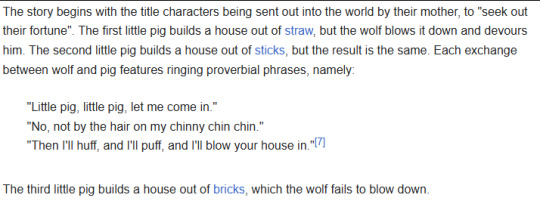
obviously the antagonist in the fable of the three little pigs is the wolf. so far the only wolf in the game is von lycaon and all signs suggest he is a werewolf in particular, to be contrasted against hugo vlad's vampire.
but there's another ambiguously canine thiren in the game.
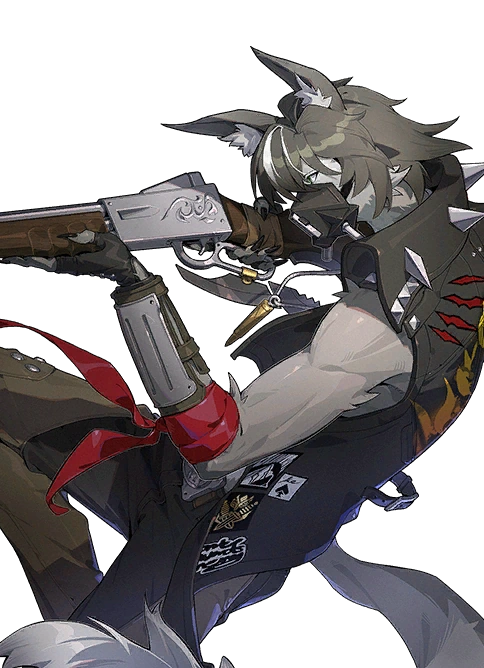
and he's positioned as a right-hand man to lucius, who took out pompey and who the sons of calydon are decently likely to come into conflict with in the long run.
lucius also already has other henchmen who are explicitly positioned as counterparts to other sons of calydon characters (pulchra and burnice, bellum and lighter).

lucy agent story featuring her and the three little pigs against the big bad wolf when, hoyo. he already exists as an enemy mob, even!
3 notes
·
View notes
Text
If y'all know me,I'm trying to write my own TVDU crossover with AHS and other properties such as Teen Wolf,called the Millennium Of Hellfire.
The reason I'm writing this series,is because I'm tired of watching the characters of color and queer characters get shafted and shitted on while white characters get to be complex and given victimhood,when many are abusers and oppressors.So,for MOH,those characters such as Tyler Lockwood,get to live instead of dying in canon and have a happy ending.For my series,I created three oc characters that represent their species and their collective traumas:
Desmond Jameson
Marcos Corazón
Simon Quinn
The reason,I created them was because I was so tired of the treatment of their species,hell even the vampires,the Originals treated them horribly,and it just made my blood boil.But after watching Legacies,it just made the fire brighter and I started the Millennium Of Hellfire Series.
Each character has a past with the Mikaelsons since I don't really like the family and how their victims get treated like villains for getting their revenge for their cruelty.So,I started writing the Trio's stories.Each of them have a particular one in the family,that they consider their nemesis & the one that they share with similar traits with.
Desmond>Freya
Marcos>Klaus
Simon>Elijah
So,I decided to write a Legacies Rewrite with them as the mains instead of Hope Mikaelson and Landon Kirby.But that doesn't mean they aren't in the story,they are secondary mains.But the season 1 rewrite will deal with the monsters & Malivore along with the demons of Des's past so,we can get mythology such as the origin of witches and their ties with other beings such as demons,angels and deities.It also connects to other property's mythology such as Marcos's matriline being descended from Lycaon,the first Lycan,from Teen Wolf.
Also the idea of a black witch being one of the most powerful supernaturals,always gets me giddy since we got that in Bonnie,Vincent and Cleo,which is why Desmond will be the one that challenges Hope's beliefs around her family and the myth of her being the most powerful being in the world,since he is a Tribrid like her but he comes from a ethereal and infernal origin,while she is made up of the basic supernaturals.
The trio also are the living embodiment of the Generational Trauma that the Mikaelsons had afflicted over the centuries,which is one plot that I hated,Hope never had any beef with any of the students,who's family were killed by her family,so I was like,what if she had to deal with that?This story also centers their trauma and pain instead of Hope's constant belief that her dad was a good person with flaws,it really deals with the Legacies that these characters left for the next generation.
But this book also is more focused on what it means to be a minority in the supernatural world since let's be real,it's very white-centered and I'm so bored by it,so the characters of color are centered,so in this Kaleb and MG's sireing are told,which should have been in season one but we got Sebastian's whole origin and Alyssa is not seen as vile,she actually has a point.She was going to be sent to a prisoner world with Kai Parker as a child but God forbid,Josie kills someone oh wait she did and she was forgiven.
#legacies fanfiction#the vampire diaries fanfiction#teen wolf fanfiction#Millennium Of Hellfire#original characters#black witches
8 notes
·
View notes
Text
This is a very interesting question, and I have a lot of things to say about this subject - too much unfortunately to put them all into a simple reblog. I tried, and the result was a convoluted mess. Because many questions are raised here, such as "Is Hansel and Gretel antisemitic?" and "Are ogres antisemitic figures?". Questions I will definitively make posts about
But in short, I will redirect people to a post I made when the subject of "Hansel and Gretel's blood libel" was brought up: https://adarkrainbow.tumblr.com/post/717690884124278784/please-be-aware-that-the-classic-hansel-and
Beyond this post, and to briefly say something before I make a whole new series of hyper-long posts - in short I will agree with the statement above that the witch is clearly not meant to be an antisemitic figure and is not Jewish coded in any way in the Hansel and Gretel story. But I will disagree with the statement that a "witch that eats children is uncomfortably close" to the blood libels.
I disagree with it, because saying "blood libel is about the Jews eating Christian children" is a bit of a misinformation. Blood libel is primarily, as the name says, about blood - not flesh, not eating, but taking and using blood. Which is why for example there was a whole antisemitic reading of the vampire myth. And blood libel does involve "baking" yes - but it is using blood for religious food and preparations, because the blood libel is about occult rituals/perversion of religious rituals/so-called black masses and devil worship. In the story of Hansel and Gretel, there is no mention of blood, and no mention of any occult ritual or religious rite. It is just the old folktale tradition of the depraved cannibal and monstrous man-eater that feasts on the flesh of the innocents. It is a tradition as old as humanity and that dates back to, for example, Greek myths of Tantalus, Cronos, Lycaon, Polyphemus the Cyclop... If the story explicitely mentioned the witch using blood to bake some pies, I'd agree - yes there's blood libel subtext in there. But the story in all the editions of the Grimm's Household Tales does NOT have blood libel subtext - except maybe the subtext other people are willing to put into it.
As a silly and superficial comparison: Reading Hansel and Gretel does not bring to mind any antisemitism for me, and I feel reading a blood libel story in there is quite a stretch. However, I know I personaly, as an European, was shocked when I saw Hotel Transylvania scenes that depicted Dracula and his vampire clan as Jewish - something that for many Americans felt just like a good joke or "representation", but to me was shocking due to the whole "Jews are vampires" slander, and thus it came off as accidentally/mistakenly antisemitic, by unknowingly perpetuating the kind of caricatures people such as the Nazis enforced in people's minds.
But I digress - and to return to the original post, to answer the question that opens the debate, I firmly stand by the side of the second proposition. Stories of ogres and the like are much older than the legends of the blood libel, and take their roots in Greco-Roman mythology. Or more precisely they take their roots from what has been considered by all times and most civilizations as a great taboo: cannibalism, which is in most society's collective mind one of the great primordial crmes alongside things such as incest or a parent killing their own child (which are all topics explored by fairytales and folktales heavily). So yes, it is pretty clear, when you know the evolution of culture and cultural tropes, that minorities accused of eating children is a side-product of how folktales and legends depict the most wicked humans and the humans who lose their humanity for monstrosity as eating people (ogres, giants and cyclops ; werewolves too ; and originally vampires, the pre-Dracula, old Eastern European kind, also devoured corpses and human flesh on top of drinking the blood). This is why, when you want to dehumanize people, you call them "baby-eaters". Conspiracy theorists do that today claiming the rich elite of the "new world order" eat babies ; and this dates back all the way to the European witch hunts - a part of the witch craze was the belief that witches ate dead children or dead babies during their feasts. Canniballism was one of the "fifteen crimes of the witch" alongside things such as devil-worship, blasphemy and incest.
And this is VERY important because the brothers Grimm fairytales are from a post-witch hunt Europe, and the imagination of folktales was deeply marked by the European witch madness. This is notably why so many wicked fairies of French or Italian variations of the fairytales were replaced by witches in the Grimm versions. The witches were much more present, prominent and well-known cultural figures at the time than fairies.
But all in all I cannot insist enough on the fact that blood libel was primarily and originally about Jews stealing, using and consuming Christian BLOOD hence the name. If we start calling any story involving cannibalism a "blood libel" story, we're going down a path of muddled misinformation - the episode "To Serve Man" of The Twilight Zone is not a blood libel story for example - and we will end up over-focusing too much on stories not antisemitic by themselves ; and ignore ACTUAL antisemitic stories with blatant Jewish caricatures, insults and attacks. And there are several in the Grimm fairytales - just look at stories like "The Jew in the Thorns" and THERE you'll find actual antisemitism.
A part of me wishes that the lesser-known versions of Hansel and Gretel where the villain is a wolf or a bear had become the "standard" version, rather than the Grimms' version with the witch.
It goes without saying that a wolf or a bear will eat lost children, that's just the nature of a wild carnivorous animal. Whereas a humanoid witch who eats children can seem uncomfortably close to the appalling "blood libel" legend of Jews consuming Christian children's blood, as @the-gentile-folklorist has often posted.
I don't consider Hansel and Gretel's Witch an inherently antisemitic figure, though – she's not a Jew, she's a witch. (Not that the Grimms portrayed actual Jews any more positively in other stories, but that's another topic.) The question is open: did stories of witches, ogres, etc. who eat children evolve from the blood libel legend? Or did people just take a primal fear, children being killed and eaten, and independently apply it both to imaginary monsters and to the horrific slandering of a minority group?
#reblog#hansel and gretel#antisemitism#antisemitic fairytales#this is just a fragment of what i want to say but i hope it will be enough for now#grimm fairytales#brothers grimm#german fairytales
62 notes
·
View notes
Text
Shapeshifter
Shapeshifting is the ability to physically transform oneself through an inherently superhuman ability, divine intervention, demonic manipulation, sorcery, spells or having inherited the ability.
Popular shapeshifting creatures in folklore are werewolves and vampires (mostly of European, Canadian, and Native American/early American origin), the huli jing of East Asia (including the Japanese kitsune and Korean kumiho), and the gods, goddesses, and demons of numerous mythologies, such as the Norse Loki or the Greek Proteus. Shapeshifting to the form of a gray wolf is specifically known as lycanthropy, and such creatures who undergo such change are called lycanthropes. Therianthropy is the more general term for human-animal shifts, but it is rarely used in that capacity. It was also common for deities to transform mortals into animals and plants.
Other terms for shapeshifters include metamorph, the Navajo skin-walker, mimic, and therianthrope. The prefix "were-", coming from the Old English word for "man" (masculine rather than generic), is also used to designate shapeshifters; despite its root, it is used to indicate female shapeshifters as well.
While the popular idea of a shapeshifter is of a human being who turns into something else, there are numerous stories about animals that can transform themselves as well.

Pic by mernolan on tumblr
Examples of shapeshifting in classical literature include many examples in Ovid's Metamorphoses, Circe's transforming of Odysseus' men to pigs in Homer's The Odyssey, and Apuleius's Lucius becoming a donkey in The Golden Ass. Proteus was noted among the gods for his shapeshifting; both Menelaus and Aristaeus seized him to win information from him, and succeeded only because they held on during his various changes. Nereus told Heracles where to find the Apples of the Hesperides for the same reason.
The Titan Metis, the first wife of Zeus and the mother of the goddess Athena, was believed to be able to change her appearance into anything she wanted. In one story, she was so proud, that her husband, Zeus, tricked her into changing into a fly. He then swallowed her because he feared that he and Metis would have a son who would be more powerful than Zeus himself. Metis, however, was already pregnant. She stayed alive inside his head and built armor for her daughter. The banging of her metalworking made Zeus have a headache, so Hephaestus clove his head with an axe. Athena sprang from her father's head, fully grown, and in battle armor.
In Greek mythology, the transformation is often a punishment from the gods to humans who crossed them.
Zeus transformed King Lycaon and his children into wolves (hence lycanthropy) as a punishment for either killing Zeus' children or serving him the flesh of Lycaon's own murdered son Nyctimus, depending on the exact version of the myth.
Ares assigned Alectryon to keep watch for Helios the sun god during his affair with Aphrodite, but Alectryon fell asleep, leading to their discovery and humiliation that morning. Ares turned Alectryon into a rooster, which always crows to signal the morning and the arrival of the sun.
Demeter transformed Ascalabus into a lizard for mocking her sorrow and thirst during her search for her daughter Persephone. She also turned King Lyncus into a lynx for trying to murder her prophet Triptolemus.
Athena transformed Arachne into a spider for challenging her as a weaver and/or weaving a tapestry that insulted the gods.
Artemis transformed Actaeon into a stag for spying on her bathing, and he was later devoured by his own hunting dogs.
Galanthis was transformed into a weasel or cat after interfering in Hera's plans to hinder the birth of Heracles.
Atalanta and Hippomenes were turned into lions after making love in a temple dedicated to Zeus or Cybele.
Io was a priestess of Hera in Argos who changed her into a heifer to escape detection.
Hera punished young Tiresias by transforming him into a woman and, seven years later, back into a man.
Callisto was turned into a bear by either Artemis or Hera for being impregnated by Zeus.
While the Greek gods could use transformation punitively – such as Medusa, turned to a monster for having sexual intercourse with Poseidon in Athena's temple – even more frequently, the tales using it are of amorous adventure. Zeus repeatedly transformed himself to approach mortals as a means of gaining access:
Danaë as a shower of gold
Europa as a bull
Leda as a swan
Ganymede, as an eagle
Alcmene as her husband Amphitryon
Hera as a cuckoo
Aegina as an eagle or a flame
Persephone as a serpent
Io, as a cloud
Callisto as either Artemis or Apollo
Nemesis (Goddess of retribution) transformed into a goose to escape Zeus' advances, but he turned into a swan. She later bore the egg in which Helen of Troy was found.
Vertumnus transformed himself into an old woman to gain entry to Pomona's orchard; there, he persuaded her to marry him.
As a final reward from the gods for their hospitality, Baucis and Philemon were transformed, at their deaths, into a pair of trees.
In some variants of the tale of Narcissus, he is turned into a narcissus flower.
Sometimes metamorphoses transformed objects into humans. In the myths of both Jason and Cadmus, one task set to the hero was to sow dragon's teeth; on being sown, they would metamorphose into belligerent warriors, and both heroes had to throw a rock to trick them into fighting each other to survive. Deucalion and Pyrrha repopulated the world after a flood by throwing stones behind them; they were transformed into people.
Cadmus is also often known to have transformed into a dragon or serpent towards the end of his life. Pygmalion fell in love with Galatea, a statue he had made. Aphrodite had pity on him and transformed the stone to a living woman.
British and Irish Fairies, witches, and wizards were all noted for their shapeshifting ability. Not all fairies could shapeshift, some having only the appearance of shapeshifting, through their power, called "glamour," to create illusions, and some were limited to changing their size, as with the spriggans, and others to a few forms. But others, such as the Hedley Kow, could change to many forms, and both human and supernatural wizards were capable of both such changes, and inflicting them on others.
Witches could turn into hares and in that form steal milk and butter.
Many British fairy tales, such as Jack the Giant Killer and The Black Bull of Norroway, feature shapeshifting.
Celtic mythology Pwyll was transformed by Arawn into Arawn's own shape, and Arawn transformed himself into Pwyll's, so that they could trade places for a year and a day.
Llwyd ap Cil Coed transformed his wife and attendants into mice to attack a crop in revenge; when his wife is captured, he turned himself into three clergymen in succession to try to pay a ransom.
Math fab Mathonwy and Gwydion transform flowers into a woman named Blodeuwedd, and when she betrays her husband Lleu Llaw Gyffes, who is transformed into an eagle, they transform her again, into an owl.
Gwion, having accidentally taken some of the wisdom potion that Ceridwen was brewing for her son, fled from her through a succession of changes that she answered with changes of her own, ending with his being eaten, a grain of corn, by her as a hen. She became pregnant, and he was reborn in a new form, as Taliesin.
Tales abound about the selkie, a seal that can remove its skin to make contact with humans for only a short amount of time before it must return to the sea. Clan MacColdrum of Uist's foundation myths include a union between the founder of the clan and a shapeshifting selkie. Another such creature is the Scottish selkie, which needs its sealskin to regain its form. In The Great Silkie of Sule Skerry the (male) selkie seduces a human woman. Such stories surrounding these creatures are usually romantic tragedies. Scottish mythology features shapeshifters, which allows the various creatures to trick, deceive, hunt, and kill humans. Water spirits such as the each-uisge, which inhabit lochs and waterways in Scotland, were said to appear as a horse or a young man. Other tales include kelpies who emerge from lochs and rivers in the disguise of a horse or woman in order to ensnare and kill weary travelers. Tam Lin, a man captured by the Queen of the Fairies is changed into all manner of beasts before being rescued. He finally turned into a burning coal and was thrown into a well, whereupon he reappeared in his human form. The motif of capturing a person by holding him through all forms of transformation is a common thread in folktales.
Perhaps the best-known Irish myth is that of Aoife who turned her stepchildren, the Children of Lir, into swans to be rid of them. Likewise, in the Tochmarc Étaíne, Fuamnach jealously turns Étaín into a butterfly. The most dramatic example of shapeshifting in Irish myth is that of Tuan mac Cairill, the only survivor of Partholón's settlement of Ireland. In his centuries long life he became successively a stag, a wild boar, a hawk and finally a salmon prior to being eaten and (as in the Wooing of Étaín) reborn as a human.
The Púca is a Celtic faery, and also a deft shapeshifter. He can transform into many different, terrifying forms.
Norse There is a significant amount of literature about shapeshifters that appear in a variety of Norse tales.
In the Lokasenna, Odin and Loki taunt each other with having taken the form of females and nursing offspring to which they had given birth. A 13th-century Edda relates Loki taking the form of a mare to bear Odin's steed Sleipnir which was the fastest horse ever to exist, and also the form of a she-wolf to bear Fenrir.
Svipdagr angered Odin, who turned him into a dragon. Despite his monstrous appearance, his lover, the goddess Freyja, refused to leave his side. When the warrior Hadding found and slew Svipdagr, Freyja cursed him to be tormented by a tempest and shunned like the plague wherever he went. In the Hyndluljóð, Freyja transformed her protégé Óttar into a boar to conceal him. She also possessed a cloak of falcon feathers that allowed her to transform into a falcon, which Loki borrowed on occasion.
The Volsunga saga contains many shapeshifting characters. Siggeir's mother changed into a wolf to help torture his defeated brothers-in-law with slow and ignominious deaths. When one, Sigmund, survived, he and his nephew and son Sinfjötli killed men wearing wolfskins; when they donned the skins themselves, they were cursed to become werewolves.
The dwarf Andvari is described as being able to magically turn into a pike. Alberich, his counterpart in Richard Wagner's Der Ring des Nibelungen, using the Tarnhelm, takes on many forms, including a giant serpent and a toad, in a failed attempt to impress or intimidate Loki and Odin/Wotan.
Fafnir was originally a dwarf, a giant or even a human, depending on the exact myth, but in all variants he transformed into a dragon—a symbol of greed—while guarding his ill-gotten hoard. His brother, Ótr, enjoyed spending time as an otter, which led to his accidental slaying by Loki.
In Scandinavia, there existed, for example, the famous race of she-werewolves known with a name of Maras, women who took on the appearance of huge half-human and half-wolf monsters that stalked the night in search of human or animal prey. If a woman gives birth at midnight and stretches the membrane which envelopes the child when it is brought forth, between four sticks and creeps through it, naked, she will bear children without pain; but all the boys will be shamans, and all the girls Maras.
The Nisse is sometimes said to be a shapeshifter. This trait also is attributed to Hulder. Gunnhild, Mother of Kings (Gunnhild konungamóðir) (c. 910 – c. 980), a quasi-historical figure who appears in the Icelandic Sagas, according to which she was the wife of Eric Bloodaxe, was credited with magic powers – including the power of shapeshifting and turning at will into a bird. She is the central character of the novel Mother of Kings by Poul Anderson, which considerably elaborates on her shapeshifting abilities.
Armenian In Armenian mythology, shapeshifters include the Nhang, a serpentine river monster than can transform itself into a woman or seal, and will drown humans and then drink their blood; or the beneficial Shahapet, a guardian spirit that can appear either as a man or a snake.
Indian Ancient Indian mythology tells of Nāga, snakes that can sometimes assume human form. Scriptures describe shapeshifting Rakshasa (demons) assuming animal forms to deceive humans. The Ramayana also includes the Vanara, a group of apelike humanoids who possessed supernatural powers and could change their shapes.
Yoginis were associated with the power of shapeshifting into female animals.
In the Indian fable The Dog Bride from Folklore of the Santal Parganas by Cecil Henry Bompas, a buffalo herder falls in love with a dog that has the power to turn into a woman when she bathes.
In Kerala, there was a legend about the Odiyan clan, who in Kerala folklore are men believed to possess shapeshifting abilities and can assume animal forms. Odiyans are said to have inhabited the Malabar region of Kerala before the widespread use of electricity.
Philippines Philippine mythology includes the Aswang, a vampiric monster capable of transforming into a bat, a large black dog, a black cat, a black boar or some other form in order to stalk humans at night. The folklore also mentions other beings such as the Kapre, the Tikbalang and the Engkanto, which change their appearances to woo beautiful maidens. Also, talismans (called "anting-anting" or "birtud" in the local dialect), can give their owners the ability to shapeshift. In one tale, Chonguita the Monkey Wife, a woman is turned into a monkey, only becoming human again if she can marry a handsome man.
Tatar Tatar folklore includes Yuxa, a hundred-year-old snake that can transform itself into a beautiful young woman, and seeks to marry men in order to have children.
Chinese Chinese mythology contains many tales of animal shapeshifters, capable of taking on human form. The most common such shapeshifter is the huli jing, a fox spirit which usually appears as a beautiful young woman; most are dangerous, but some feature as the heroines of love stories. Madame White Snake is one such legend; a snake falls in love with a man, and the story recounts the trials that she and her husband faced.
Japanese
In Japanese folklore ōbake are a type of yōkai with the ability to shapeshift. The fox, or kitsune is among the most commonly known, but other such creatures include the bakeneko, the mujina and the tanuki.
Korean Korean mythology also contains a fox with the ability to shapeshift. Unlike its Chinese and Japanese counterparts, the kumiho is always malevolent. Usually its form is of a beautiful young woman; one tale recounts a man, a would-be seducer, revealed as a kumiho. The kumiho has nine tails and as she desires to be a full human, she uses her beauty to seduce men and eat their hearts (or in some cases livers where the belief is that 100 livers would turn her into a real human).
Somali In Somali mythology Qori ismaris ("One who rubs himself with a stick") was a man who could transform himself into a "Hyena-man" by rubbing himself with a magic stick at nightfall and by repeating this process could return to his human state before dawn.
Southern Africa Kaggen is Mantis, a demi-urge and folk hero of the Xam people of southern Africa. He is a trickster god who can shape shift, usually taking the form of a praying mantis but also a bull eland, a louse, a snake, and a caterpillar.
Trinidad and Tobago The Ligahoo or loup-garou is the shapeshifter of Trinidad and Tobago's folklore. This unique ability is believed to be handed down in some old creole families, and is usually associated with witch-doctors and practitioners of African magic.
Mapuche (Argentina and Chile) The name of the Nahuel Huapi Lake in Argentina derives from the toponym of its major island in Mapudungun (Mapuche language): "Island of the Jaguar (or Puma)", from nahuel, "puma (or jaguar)", and huapí, "island". There is, however, more to the word "Nahuel" – it can also signify "a man who by sorcery has been transformed into a puma" (or jaguar).
Slavic Mythology In Slavic Mythology, one of the main gods Veles was a shapeshifting god of animals, magic and the underworld. He was often represented as a bear, wolf, snake or owl. He also became a dragon while fighting Perun, the Slavic storm god.
Folktales In the Finnish tale The Magic Bird, three young sorceresses attempt to murder a man who keeps reviving. His revenge is to turn them into three black mares and have them harnessed to heavy loads until he is satisfied.
In The Laidly Worm of Spindleston Heugh, a Northumbrian legend from about the thirteenth century, Princess Margaret of Bamburgh is transformed into a dragon by her stepmother; her motive sprung, like Snow White's stepmother's, from the comparison of their beauty.
In Child ballad 35, "Allison Gross", the title witch turns a man into a wyrm for refusing to be her lover. This is a motif found in many legends and folktales.
In the German tale The Frog's Bridegroom, recorded by folklorist and ethnographer Gustav Jungbauer, the third of three sons of a farmer, Hansl, is forced to marry a frog, which eventually turns out to be a beautiful woman transformed by a spell.
In some variants of the fairy tales, both The Frog Prince or more commonly The Frog Princess and Beast, of Beauty and the Beast, are transformed as a form of punishment for some transgression. Both are restored to their true forms after earning a human's love despite their appearance.
In the most famous Lithuanian folk tale Eglė the Queen of Serpents, Eglė irreversibly transforms her children and herself into trees as a punishment for betrayal while her husband is able to reversibly morph into a serpent at will.
In East of the Sun and West of the Moon, the hero is transformed into a bear by his wicked stepmother, who wishes to force him to marry her daughter. In The Marmot Queen by Italo Calvino, a Spanish queen is turned into a rodent by Morgan le Fay.
In The Mare of the Necromancer, a Turin Italian tale by Guido Gozzano, the Princess of Corelandia is turned into a horse by the baron necromancer for refusing to marry him. Only the love and intelligence of Candido save the princess from the spell.
The Deer in The Wood, a Neapolitan tale written by Giambattista Basile, describes the transformation of Princess Desiderata into a doe by a jealous fairy.
From a Croatian book of tales, Sixty Folk-Tales from Exclusively Slavonic Sources by A. H. Wratislaw, the fable entitled "The she-wolf" tells of a huge she-wolf with a habit of turning into a woman from time to time by taking off her skin. One day a man witnesses the transformation, steals her pelt and marries her.
The Merchant's Sons is a Finnish story of two brothers, one of whom tries to win the hand of the tsar's wicked daughter. The girl does not like her suitor and endeavors to have him killed, but he turns her into a beautiful mare which he and his brother ride. In the end he turns her back into a girl and marries her.
In Dapplegrim if the youth found the transformed princess twice, and hid from her twice, they would marry.
In literary fairy tale The Beggar Princess, in order to save her beloved prince, Princess Yvonne fulfills the tasks of cruel king Ironheart and is changed into an old woman.
11 notes
·
View notes
Text
Werewolf Fact #64 - Prehistoric Werewolves
I’ve been asked before about how old werewolf legends - the belief in werewolves in general - really are. It’s a question I get quite a lot, actually. I talked about it once, in a werewolf fact, but I didn’t go into as much detail as I could have.
So let’s talk about the oldest werewolf legends.

(yeah, another lovely moon gif - I’m running out of wolf and werewolf gifs)
For starters, werewolves are a universal legend. That means that, wherever wolves lived (which is WAY more places than they live today), there was a belief in werewolves.
This was worldwide in every wolf region and across all time periods, even dating back to prehistory. Everywhere wolves lived, we have found evidence of a belief in werewolves - all of Europe, most of Asia, the Mediterranean, India, China, North America...
People have always believed in werewolves.
Even before recorded history, werewolf legends were told in cultures all across the world. Scholars often argue over what represents the “first werewolf,” since there’s no real way to know. We can’t know the exact age of the legends that get passed down to us over time or just how many rich oral legends we’ve lost.
From pre-humans to Greeks and Romans to every other known culture that shared its existence with wolves, we have at least some proof of belief in werewolves. From Greece and Rome and Scandinavia and other civilizations, of course, we have many legends, including but not limited to the berserkers, the Arcadians, King Lykaon (often argued as the “first werewolf” that we at least have the written story for, though clearly a belief in them existed long before that), and many more across many other regions.
The prehistoric werewolf takes many appearances across many cultures, spanning basically the entire world. Werewolf legends do not seem to have spread from a single source. Many cultures came up with their own werewolf legends individually, instead of picking them up from another nearby or conquering culture.
Most werewolf scholars agree, though, that werewolves can be traced back to prehistory, though unfortunately we - obviously - don’t have the actual stories. But carbon dating of cave paintings and prehistoric artifacts puts werewolf beliefs going back as far as 45,000 BP - “Before Present,” a term used by carbon dating systems. So we’re talking around early Paleolithic Age or so.
Studying werewolves, though, will inevitably lead you also to studying wolf cults and ancient beliefs in animal transformation. Many prehistoric cultures revered the ability, even ever since the days of shamanistic hunter-gatherers, who doubtlessly had their own werewolf legends. These beliefs, though, have little to no bearing on werewolves in pop culture today, though it’s interesting to look at them and realize that werewolves have much older roots than anyone gives them credit for today. You see cases of ancient peoples revering wolves and wanting to turn into them for their power and their hunting ability and the like.
You’ll hear some scholars, like Matthew Beresford, infer that the reason people believe in werewolves all across the wolf’s prehistoric range is because it would have allowed people to take the form of the animal they feared most. What he doesn’t mention, though, is the important note that yeah, they certainly feared them, but they also respected and revered them. Wolves were something to aspire to being, for savage humans. To turn into a wolf was a respected thing, because while wolves were feared, it doesn’t necessarily mean they were “hated” so much as “respected.” Today, we equate fear with hate, but that doesn’t have to be the case.
One may ask, then, who or what was the “first werewolf?” To claim that one can trace werewolf legends – many of which predate recorded history – back to the “first” one is surely a combination of arrogance and ignorance, but, today, it has become a popular notion to assert that King Lycaon, from Greek mythology, was the “first” werewolf. Other scholars claim there are other “first” werewolves, but I won’t bother going into those, because frankly most of them are immensely silly and aren’t werewolves at all. It’s reaching. And many of them are downright silly and totally irrelevant to werewolves, and scholars mention them just because there happens to be a wolf involved at some point (and for no specific reason; in the case of one legend, you can literally substitute any animal, as other legends similar to it do in later ages).
Ultimately, defining the “first werewolf” depends largely upon how exactly one wants to define a “werewolf” - which I’ve already done here as far as I’m personally concerned, on this blog - along with a willingness to acknowledge that records of whichever legend truly told of the “first werewolf” could not possibly exist.
But either way, we can certainly acknowledge that from what we have seen, a belief in werewolves does seem to predate history.
So next time someone says werewolves are “silly,” remind them that they’re just saying that because it’s in human nature to be absolutely terrified of them. And some people want to laugh at things that scare them, I suppose.
For real, though, now you know!
(If you like my werewolf blog, be sure to check out my other stuff and consider supporting me on Patreon! I need your help now more than ever. If you enjoy the blog, I would appreciate it so much if you could pitch in so I can continue to keep this running!
Patreon — Ko-fi --- Wulfgard — Werewolf Fact Masterlist — Twitter --- Vampire Fact Masterlist )
#werewolf#werewolves#werewolf fact#werewolf wednesday#werewolfwednesday#wolf man#wolf-man#wolfmen#mythology#folklore#lycanthropy#lycanthrope#lycanthropes#werewolf facts#folklore facts#folklore fact#slightly late werewolf fact
114 notes
·
View notes
Text
.
#RINA'S CHARA DEMO IS SO COOL AND SO CUTEEE#banger song and cool angles of her and the animations made just for that video are so good#but aLSO. ALL OF VICTORIA HOUSEKEEPING AT THE END AND ELLEN ON THE COUCH SO CUTEEEE#actually getting to see her cooking too omg 😭😭#BANGER SONG TOO i was surprised when i really liked the song for lycaon's chara story stage but not rina's#bc i was definitely expecting rina's stage song to be more like what was in her demo its sooooo pretty#ok next demo✨#44597#lycaons song is a BANGERRR#his tail wagging at the end though hyv i hate you so much 😭😭#everyone jokes “they know exactly what theyre doing” from lycaons design down to the little bits of movement like that#BUT FOR REAL EVERYTHING THEY DO W HIM HAS TO BE INTENTIONAL 😭😭 ALL THE LITTLE THINGS... HIS NEMESIS IS A VAMPIRE ISNT HE?#LIKE HYV CHILL WE GET IT WE ALREADY LIKE HIM STOPP😭😭#ooo nekomatas is cool. songs got an awesome vibe and the shots are lit and CUNNING HARE GIRLIES <3#zhu yuans was cute and i was watching it in playlist order so i expected them all to be like that but theyre all diff which is p fun#and ellens was cutee <3#ooo aNBYS IS SO CUTEEEE COOL ANBY AND NICOLE <3 silly ending 😭😭#nicoles is cute😭 but ive seen it before :o! aND I JUST LEARNED HOW TO DO THE SPECIAL EX ATK ANIMATION TODAY... ITS REAAAL#billys so silly 😭 silly dude and talking guns.. reminds me of death the kid for some reason 🤔 anyw funny guy!
0 notes
Note
I'm in the middle of the story right now bc I read WIPs super slow in hopes of an update, but ⭐ The Big Bad Wolf ⭐ especially around Klaus's father?
Ok, so I’m a little late answering cause life is hectic but be prepared, I may bend these ask games rules a little because my god I have SO MUCH to say about our resident 'Tired Dad'.
Although The Big Bad Wolf came about because I had just stumbled across the Klaroline fandom, and was struck by a clawing need to write something more in depth than the show offered us, something that explored Klaus' werewolf side in detail - the real truth is, Lycaon was the beginning. He was the catalyst that sparked everything, that built this fic from the ground up. I've always loved the father-son dynamic in stories, or even the sense of family amongst characters and felt that killing Ansel off so quickly in TO was a horrendous waste of opportunity. So I fixed it by creating Lycaon.
Of course, I needed a way to explain why Klaus thought Mikael had killed his father, and well, I thought having both Mikael and Klaus believe Ansel was Klaus' father when in fact it was Lycaon, who escaped, was a great way to do it, and also gave me endless possibilities when it came to rebuilding Klaus' father's entire character. Why Lycaon survives for hundreds of years afterwards... well, I’m afraid you’ll have to wait to find out more 😉
One scene that I loved to write, was the flashback scene in chapter 8 from Elijah’s POV. Fics that explore Klaus’ werewolf form hold my entire heart, and that moment was especially poignant as its the first time Klaus is reunited with his werewolf side in over one thousand years. For Klaus and his father, it’s a beautiful moment of finally being whole again, of no longer being alone. Klaus can understand him once more, can hear the wolves speak, feel the magical bond he shared with his father before it was savagely torn away. It’s a playful, heartwarming scene, but also one of warning: there is a darkness there, a dangerous edge to Lycaon that serves as a threat to even Elijah, an Original vampire that in any other circumstance, has no reason to fear anything.
Yet he is afraid of Lycaon.
And really, that symbolises Lycaon’s entire character. A protector - both of his people and his son, kinder and fairer than Mikael, more controlled and wiser than Klaus. But just like his son, vengeance and hate clings like a shadow, and although he wouldn’t destroy his enemies in a fit of rage, that doesn’t mean he’s merciful. Not by a long shot.
Even Caroline senses the danger Lycaon poses, despite warmed by his gentleness that reminds her of her own father. She’s wary of him in a way she isn’t wary of Klaus, mainly because of one simple fact: Klaus may have never been the big bad wolf of her story, but Lycaon - a man who has made armies run at the very mention of his name and chased even the Destroyer to the ends of the earth - certainly could be.
#ask games#the big bad wolf#klaus mikaelson#caroline forbes#canon divergence#did I do it right?#either way this was fun and would love to do it again#perfectpro#didn't know how far you'd read up to so was as vague as possible about the scene#but thank you for the ask my lovely#i hope you enjoy the rest of the fic#and I will try my best to update soon lol#tbbw
5 notes
·
View notes
Text
My Agents so far
I got some more pulls in the last few days.
I managed to get one 10 pulls in one go and thankfully got 3 A-rank agents in one fell swoop which was pretty nice, I got Anton, Lucy and Nicole.

So now Anton is at M6 like Soukaku, but I still don't have his w-engine so uh, yeah.
I love using Nicole and Lucy so them getting more Cinema is pretty neat, especially since Nicole is my sole Ether specialist agent so I am using her a lot to support Billy and Piper (sorry Jane but Piper just has a higher cinema plus I got her engine twice so she hurts a bit more than you I guess).

Also I finally got Lucy's engine, funny story is that I actually got it on the normal channel not even the w-engine one. XD

Then got Lucy again so now I have her to M3, yes!

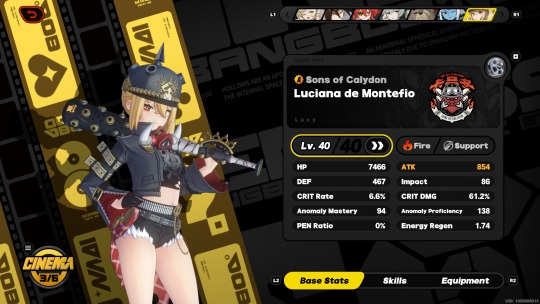
Little queen will hurt more, as soon as I can get enough stuff to level her up to level 60, got level 50 on Inter knot yesterday, and Billy is almost at level 60, then I need to raise up his attacks, then I need to have the rest of my agents do the same.
Also I wasn't able to get Caesar in my pulls. So I'm hoping that I get Burnice, or hopefully Nekomata so that I would have all the Cunning Hares or Soldier 11 so that I would be at M1 with her, that would be nice. Or I dunno, maybe Lycaon because my only Ice agent is Soukaku and I suck at her, I also have Lycaon's w-engine so that would be sweet.
But honestly I just hope that in the near future I'll get to pull for his bestie/enemy that is that cute vampire boy from his agent story, I love him so much I consider him my holy trinity of hot guys of ZZZ alongside Billy and Seth, I accept no substitutes.
I also got Nicole once more too so now both Lucy and Nicole are at M3. Alongside Billy and Corin. Anby and Piper are M5. Anton and Soukaku are M6. Seth is at M2. Soldier 11, Jane, Koleda and Ben are at M0.
So far I finished everyone's agent stories, completed the first area with the dead end butcher in Hollow Zero, and now am stuck at frontier 9 of Shiyu Defense. I just finished the computer event too so I'm a bit stumped for Polychromes, I won't lie I did buy some stuff to get some which is how I got my 10 pulls in one go, but that was the rest of what I had in store on my PS5 after buying V Rising's complete edition so yeah. Now gotta wait to slowly raise my agents to level 60/50 one by one the long, painful, hard way (I feel Hollow Zero is annoying a bit especially when I have that one Thanatos guarding the freaking gates I loathe them to death it's the one guarding the 9th frontier of Shiyu Defense that is stopping me right now.
I am also trying to get Billy special trust events, so far they are running away from me, got a few and I feel those are beating my heart so badly, like why is Billy so hard on himself for real, he is more amazing than he thinks, yet somehow the game seems to treat him like a ragdoll, one moment we are defending him and caring toward him the other one we seems mean, unless it's teasing, though chapter 4 makes me feel Phaethon seems to find him a bit too much even if they care about him.
#zzz#zenless zone zero#billy kid#zzz billy#zzz billy kid#billy kid zzz#billy kid zenless zone zero#nicole demara#luciana de montefio#cunning hares#zzz nicole#zzz nekomata#nekomiya mana#zzz anby#zzz anton#anton ivanov#anby demara#corin wickes#zzz corin#zzz seth#seth lowell#zzz soukaku#soukaku#soldier 11#ben bigger#von lycaon#piper wheel#zzz piper#burnice white#zzz burnice
6 notes
·
View notes
Text
A Horror History of Werewolves
As far as horror icons are concerned, werewolves are among the oldest of all monsters. References to man-to-wolf transformations show up as early as the Epic of Gilgamesh, making them pretty much as old as storytelling itself. And, unlike many other movie monsters, werewolves trace their folkloric roots to a time when people truly believed in and feared these creatures.
But for a creature with such a storied past, the modern werewolf has quite the crisis of identity. Thanks to an absolute deluge of romance novels featuring sometimes-furry love interests, the contemporary idea of “werewolf” is decidedly de-fanged. So how did we get here? Where did they come from, where are they going, and can werewolves ever be terrifying again?
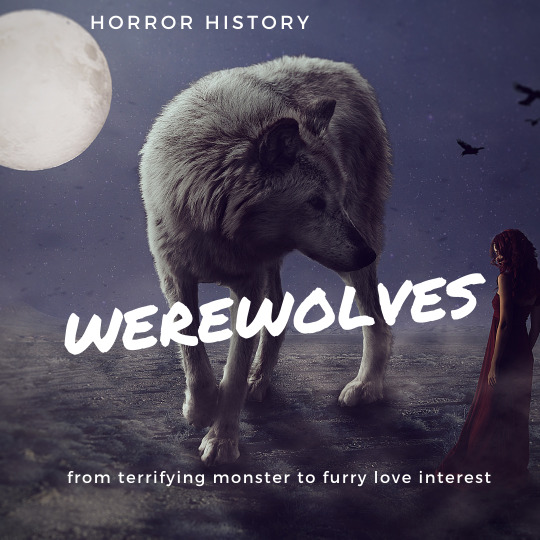
Werewolves in Folklore and Legend
Ancient Greece was full of werewolf stories. Herodotus wrote of a nomadic tribe from Scythia (part of modern-day Russia) who changed into wolves for a portion of the year. This was most likely a response to the Proto-Indo-European societies living in that region at the time -- a group whose warrior class would sometimes don animal pelts and were said to call on the spirit of animals to aid them in battle (the concept of the berserker has the same roots -- just bears rather than wolves).
In Arcadia, there was a local legend about King Lycaon, who was turned to a wolf as punishment for serving human meat to Zeus (exact details of the event vary between accounts, but cannibalism and crimes-against-the-gods are a common theme). Pliny the Elder wrote of werewolves as well, explaining that those who make a sacrifice to Zeus Lycaeus would be turned to wolves but could resume human form years later if they abstained from eating human meat in that time.
By the time we reach the Medieval period in Europe, werewolf stories were widespread and frequently associated with witchcraft. Lycanthropy could be either a curse laid upon someone or a transformation undergone by someone practicing witchcraft, but either way was bad news in the eyes of the church. For several centuries, witch-hunts would aggressively seek out anyone suspected of transforming into a wolf.
One particularly well-known werewolf trial was for Peter Stumpp in 1589. Stumpp, known as "The Werewolf of Bedburg," confessed to killing and eating fourteen children and two pregnant women while in the form of a wolf after donning a belt given to him by the Devil. Granted, this confession came on the tail-end of extensive public torture, so it may not be precisely reliable. His daughter and mistress were also executed in a public and brutal way during the same trial.
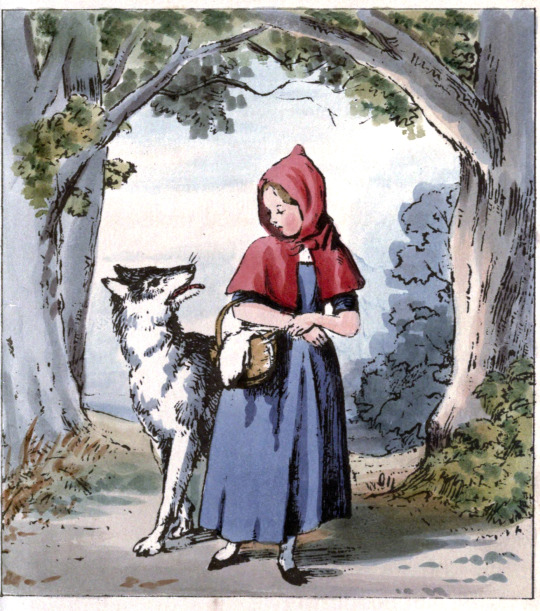
Who’s Afraid of the Big Bad Wolf?
The thing you have to understand when studying folklore is that, for many centuries, wolves were the apex predator of Europe. While wolf attacks on humans have been exceedingly rare in North America, wolves in Europe have historically been much bolder -- or, at least, there are more numerous reports of man-eating wolves in those regions. Between 1362 and 1918, roughly 7,600 people were reportedly killed by wolves in France alone, which may have some bearing on the local werewolf tradition of the loup-garou.
For people living in rural areas, subsisting as farmers or hunters, wolves posed a genuine existential threat. Large, intelligent, utilizing teamwork and more than capable of outwitting the average human, wolves are a compelling villain. Which is probably why they show up so frequently in fairytales, from Little Red Riding Hood to Peter and the Wolf to The Three Little Pigs.
Early Werewolf Fiction
Vampires have Dracula and zombies have I Am Legend, but there really is no clear singular book to point to as the "First Great Werewolf Novel." Perhaps by the time the novel was really taking off as an artform, werewolves had lost some of their appeal. After all, widespread literacy and reading-for-pleasure went hand-in-hand with advancements in civilization. For city-dwellers in Victorian England, for example, the threat of a wolf eating you alive probably seemed quite remote.
Don't get me wrong -- there were some Gothic novels featuring werewolves, like Sutherland Menzies' Hugues, The Wer-Wolf, or G.W.M. Reynolds' Wagner the Wehr-Wolf, or even The Wolf Leader by Alexandre Dumas. But these are not books that have entered the popular conscience by any means. I doubt most people have ever heard of them, much less read them.
No -- I would argue that the closest thing we have, thematically, to a Great Werewolf Novel is in fact The Strange Case of Dr. Jekyll and Mr. Hyde by Robert Louis Stevenson. Written in 1886, the Gothic novella tells the story of a scientist who, wanting to engage in certain unnamed vices without detection, created a serum that would allow him to transform into another person. That alter-ego, Mr. Hyde, was selfish, violent, and ultimately uncontrollable -- and after taking over the body on its own terms and committing a murder or two, the only way to stop Hyde’s re-emergence was suicide.
Although not about werewolves, per se, Jekyll & Hyde touches on many themes that we'll see come up time and again in werewolf media up through the present day: toxic masculinity, the dual nature of man, leading a double life, and the ultimate tragedy of allowing one's base instincts/animal nature to run wild. Against a backdrop of Victorian sexual repression and a rapidly shifting concept of humanity's relationship to nature, it makes sense that these themes would resonate deeply (and find a new home in werewolf media).
It is also worth mentioning Guy Endore's The Werewolf of Paris, published in 1933. Set against the backdrop of the Franco-Prussian war and subsequent military battles, the book utilizes a werewolf as a plot device for exploring political turmoil. A #1 bestseller in its day, the book was a big influence on the sci-fi and mystery pulp scene of the 1940s and 50s, and is still considered one of the best werewolf novels of its ilk.
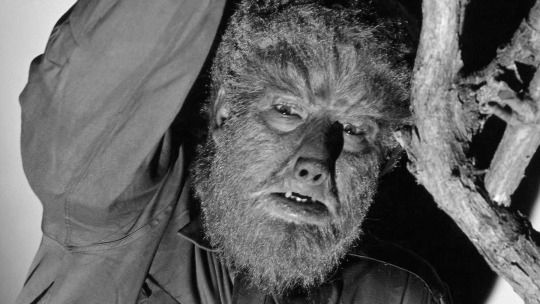
From Silver Bullets to Silver Screens
What werewolf representation lacks in novels, it makes up for in film. Werewolves have been a surprisingly enduring feature of film from its early days, due perhaps to just how much fun transformation sequences are to film. From camera tricks to makeup crews and animatronics design, werewolf movies create a lot of unique opportunities for special effects -- and for early film audiences especially (who were not yet jaded to movie magic), these on-screen metamorphoses must have elicited true awe.
The Wolf Man (1941) really kicked off the trend. Featuring Lon Chaney Jr. as the titular wolf-man, the film was cutting-edge for its time in the special effects department. The creature design is the most memorable thing about the film, which has an otherwise forgettable plot -- but it captured viewer attention enough to bring Chaney back many times over for sequels and Universal Monster mash-ups.
The Wolf Man and 1944's Cry of the Werewolf draw on that problematic Hollywood staple, "The Gypsy Curse(tm)" for their world-building. Fortunately, werewolf media would drift away from that trope pretty quickly; curses lost their appeal, but “bite as mode of transmission” would remain an essential part of werewolf mythos.
In 1957, I Was a Teenage Werewolf was released as a classic double-header drive-in flick that's nevertheless worth a watch for its parallels between werewolfism and male aggression (a theme we'll see come up again and again). Guy Endore's novel got the Hammer Film treatment for 1961's The Curse of the Werewolf, but it wasn't until the 1970s when werewolf media really exploded: The Beast Must Die, The Legend of the Wolf Woman, The Fury of the Wolfman, Scream of the Wolf, Werewolves on Wheels and many more besides.
Hmmm, werewolves exploding in popularity around the same time as women's liberation was dramatically redefining gender roles and threatening the cultural concept of masculinity? Nah, must be a coincidence.
The 1980s brought with it even more werewolf movies, including some of the best-known in the genre: The Howling (1981), Teen Wolf (1985), An American Werewolf in London (1981), and The Company of Wolves (1984). Differing widely in their tone and treatment of werewolf canon, the films would establish more of a spiderweb than a linear taxonomy.
That spilled over into the 1990s as well. The Howling franchise went deep, with at least seven films that I can think of. Wolf, a 1994 release starring Jack Nicholson is especially worth a watch for its themes of dark romantic horror.
By the 2000s, we get a proper grab-bag of werewolf options. There is of course the Underworld series, with its overwrought "vampires vs lycans" world-building. There's also Skin Walkers, which tries very hard to be Underworld (and fails miserably at even that low bar). But there's also Dog Soldiers and Ginger Snaps, arguably two of the finest werewolf movies of all time -- albeit in extremely different ways and for very different reasons.
Dog Soldiers is a straightforward monster movie pitting soldiers against ravenous werewolves. The wolves could just as easily have been subbed out with vampires or zombies -- there is nothing uniquely wolfish about them on a thematic level -- but the creature design is unique and the film itself is mastefully made and entertaining.
Ginger Snaps is the first werewolf movie I can think of that tackles lycanthropy from a female point of view. Although The Company of Wolves has a strong feminist angle, it is still very much a film about male sexuality and aggression. Ginger Snaps, on the other hand, likens werewolfism to female puberty -- a comparison that frankly makes a lot of sense.
The Werewolf as Sex Object
There are quite literally thousands of werewolf romance novels on the market, with more coming in each day. But the origins of this trend are a bit fuzzier to make out (no pun intended).
Everyone can mostly agree that Anne Rice’s Interview with a Vampire was the turning-point for sympathetic vampires -- and paranormal romance as a whole. But where do werewolves enter the mix? Possibly with Laurell K. Hamilton’s Anita Blake, Vampire Hunter books, which feature the titular character in a relationship with a werewolf (and some vampires, and were-leopards, and...many other things). With the first book released in 1993, the Anita Blake series seems to pre-date similar books in its ilk.
Blood and Chocolate (1997) by Annette Curtis Klause delivers a YA-focused version of the classic “I’m a werewolf in high school crushing on a mortal boy”; that same year, Buffy the Vampire Slayer hit the small screen, and although the primary focus was vampires, there is a main werewolf character (and romancing him around the challenges of his wolfishness is a big plot point for the characters involved). And Buffy, of course, paved the way for Twilight in 2005. From there, werewolves were poised to become a staple of the ever-more-popular urban fantasy/paranormal romance genre.
“Sexy werewolf” as a trope may have its roots in other traditions like the beastly bridegroom (eg, Beauty and the Beast) and the demon lover (eg, Labyrinth), which we can talk about another time. But there’s one other ingredient in this recipe that needs to be discussed. And, oh yes, we’re going there.
youtube
Alpha/Beta/Omegaverse
By now you might be familiar with the concept of the Omegaverse thanks to the illuminating Lindsay Ellis video on the topic (and the current ongoing lawsuit). If not, well, just watch the video. It’ll be easier than trying to explain it all. (Warning for NSFW topics).
But the tl;dr is that A/B/O or Omegaverse is a genre of (generally erotic) romance utilizing the classical understanding of wolf pack hierarchy. Never mind that science has long since disproven the stratification of authority in wolf packs; the popular conscious is still intrigued by the concept of a society where some people are powerful alphas and some people are timid omegas and that’s just The Way Things Are.
What’s interesting about the Omegaverse in regards to werewolf fiction is that, as near as I’ve been able to discover, it’s actually a case of convergent evolution. A/B/O as a genre seems to trace its roots to Star Trek fanfiction in the 1960s, where Kirk/Spock couplings popularized ideas like heat cycles. From there, the trope seems to weave its way through various fandoms, exploding in popularity in the Supernatural fandom.
What seems to have happened is that the confluence of A/B/O kink dynamics merging with urban fantasy werewolf social structure set off a popular niche for werewolf romance to truly thrive.
It’s important to remember that, throughout folklore, werewolves were not viewed as being part of werewolf societies. Werewolves were humans who achieved wolf form through a curse or witchcraft, causing them to transform into murderous monsters -- but there was no “werewolf pack,” and certainly no social hierarchy involving werewolf alphas exerting their dominance over weaker pack members. That element is a purely modern one rooted as much in our misunderstanding of wolf pack dynamics as in our very human desire for power hierarchies.
So Where Do We Go From Here?
I don’t think sexy werewolf stories are going anywhere anytime soon. But that doesn’t mean that there’s no room left in horror for werewolves to resume their monstrous roots.
Thematically, werewolves have done a lot of heavy lifting over the centuries. They hold up a mirror to humanity to represent our own animal nature. They embody themes of toxic masculinity, aggression, primal sexuality, and the struggle of the id and ego. Werewolf attack as sexual violence is an obvious but powerful metaphor for trauma, leaving the victim transformed. Werewolves as predators hiding in plain sight among civilization have never been more relevant than in our #MeToo moment of history.
Can werewolves still be frightening? Absolutely.
As long as human nature remains conflicted, there will always be room at the table for man-beasts and horrifying transfigurations.
--
This blog topic was chosen by my Patreon supporters, who got to see it one week before it went live. If you too would enjoy early access to my blog posts, want to vote for next month’s topic, or just want to support the work I do, come be a patron at https://www.patreon.com/tlbodine
52 notes
·
View notes
Text
Full Moon Rising: Beware of the Big Bad Werewolf
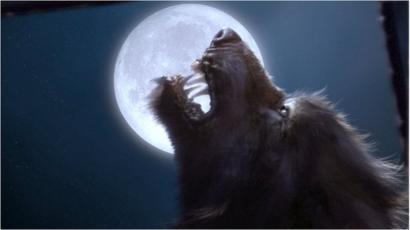
Source: BBC News
Alongside vampires and zombies, werewolves have long been a part of everyone's favorite "things that go bump in the night." Werewolves have been stalking us in our nightmares (or dreams - however you like it) from the 1941 film "The Wolf Man" to 80's classics "The Howling" and "American Werewolf in London" to the Underworld series of the 2000's and beyond. Werewolf stories have evolved over the years from 1941's tortured Lawrence Talbot to rebellious, proud lycan Lucien in the Underworld series. Werewolves have carved their own niche in fiction, film and TV. What inspired tales of humans who morph into animals by the light of the full moon?
The first image of a human becoming a wolf is in the oldest known work of literature, The Epic of Gilgamesh, which dates back to 1800 B.C.E. in ancient Mesopotamia. Gilgamesh rejects a woman after finding out that she turned her former lover into a wolf. An ancient Greek myth, The Legend of Lycaon, tells the story of how Zeus turns Lycaon into a wolf after Lycaon serves him a meal made from the remains of a sacrificed boy. The Saga of Volsungs is a Nordic folktale about magical wolf pelts that can turn anyone wearing them into a wolf for 10 days. In the story, a father and son find the pelts and go on a woodland killing spree, which ends with a brutal fight between the two. The father dies and leaves behind a leaf with healing properties which the son uses to recover from his injuries.
Traditional folklore dictates that a human becomes a werewolf by being bitten by a werewolf, can only change during the full moon and can only be killed by a silver bullet. Over the centuries, folklore has provided many other ways a person could become a werewolf: sleeping outside during a full moon on a Friday, eating a combination of wolf and human meat, a witch's curse, being conceived during a new moon, drinking water touched by a wolf and eating certain herbs.
Many people associate the moon with werewolves. The origin of the belief that the full moon can cause all sorts of chaos is unknown. After being reinforced over the years, this belief has created an expectation of nothing but trouble during a full moon.
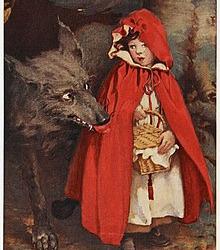
Source: Wikipedia; Illustration by J.W. Smith
There were, however, several cures for werewolves to rid themselves of their affliction. Some cures recommended by medieval medical practitioners included surgery, vomiting, drinking vinegar and bloodletting. Sometimes, these cures were the exact opposite, leading to the death of a patient. The alternatives to medicinal cures were an exorcism or a silver bullet.
Any being that's part of folklore has had gained fame or notoriety with a real person or event. Sightings and encounters with all sorts of beings have been reported throughout the ages such as vampires, sasquatch, fairies and lake monsters. The history of werewolves includes many cases of people who claimed to be werewolves.
In 14th century Germany, Peter Stubbe, a wealthy farmer, claimed that he owned a magical belt that turned him into a wolf and that, in wolf form, he had killed several people. There was a group of hunters who claimed that they saw him change from wolf to human. Stubbe confessed to 12 murders that were allegedly committed over a period of 25 years. Stubbe made his confession after being subjected to brutal torture. There was no evidence of any murders having committed by Stubbe.
In an odd little twist, Stubbe was executed on Halloween in 1589. He was beheaded, then burned at the stake. Belief in werewolves was common during the middle ages. The consensus was that werewolves were created by a witch's curse.
Three other confessed werewolves would meet the same fate. During the same time period in France, Giles Garnier, Michel Verdun and Pierre Burgot, in three separate cases, all claimed that they had an ointment that turned them into wolves, causing them to kill and devour children. They were all burned at the stake.
Let's return to Germany, home of the infamous Peter Stubbe. During the 18th century, a young boy was found in the woods exhibiting animalistic behavior. Dubbed "Peter the Wild Boy," he was unable to speak, walked on all fours and ate with his hands. The general consensus was that he was either a werewolf or raised by wolves.
"Peter" was eventually adopted as a "pet" by the courts of King George I and King George II. Current medical knowledge has been applied to Peter's case. Most likely, he suffered from Pitt-Hopkins syndrome, which was discovered in 1978. Pitt-Hopkins syndrome impairs speech, intellect, the respiratory system and can cause seizures and also affect facial features.
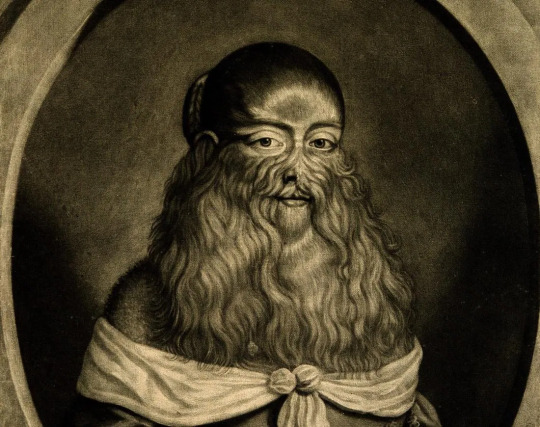

Two people who were born with hypertrichosis. Top photo: Barbara Vanbeck; Source: Medical News Today (Image Credit: Wellcome Images, 2014); Portrait by R. Gaywood, 1656. Bottom: Petrus Gonzales, the Wolf Boy of the Canary Islands; Source: Ashland Science
Many other conditions both physiological and psychological have contributed to the werewolf myth. Hypertrichosis is a rare genetic disorder that causes hair growth to the extent of giving a human being a wolf-like appearance. Lycanthropy is a rare psychological disorder which causes a person to have delusions of changing into an animal. Rabies has also been mentioned as a possible culprit contributing to werewolf folklore as well as food poisoning and hallucinogenic herbs (perhaps ingredients in a "werewolf" ointment).
The mention of food poisoning and hallucinogens makes me think of the theory that ergot poisoning led to the infamous 18th century witch hysteria in Salem, Massachusetts, which led to the execution of several alleged "witches." Ergot poisoning is caused by fungus that grows on rye as well as other types of cereals. In 1976, Linnda Caporael presented the argument that many of the characteristics exhibited by those who were described as "bewitched" in records of the trials, matched the symptoms of ergot poisoning (hallucinations, muscle contractions, psychosis, etc.). Besides an abundance of rye in the area, the climate would've caused conditions that could've produced the fungus.
Eating bread produced by tainted wheat may have caused mass witch hysteria in Salem. Food poisoning could have also created werewolves.
From the myths of ancient civilizations to contemporary pop culture, werewolves have captured our imaginations in many ways. Whether we love to hate them, hate to love them or long to embrace them, werewolves and other shape-shifters will continue to fascinate the dark side of the human imagination for many years to come.
- Missy Dawn

Sources:
"Werewolf Legends," August 21, 2018, History.com, by History.com editors
"Werewolves: Lore, Legend & Lycanthropy," by Benjamin Radford, LiveScience
4 notes
·
View notes